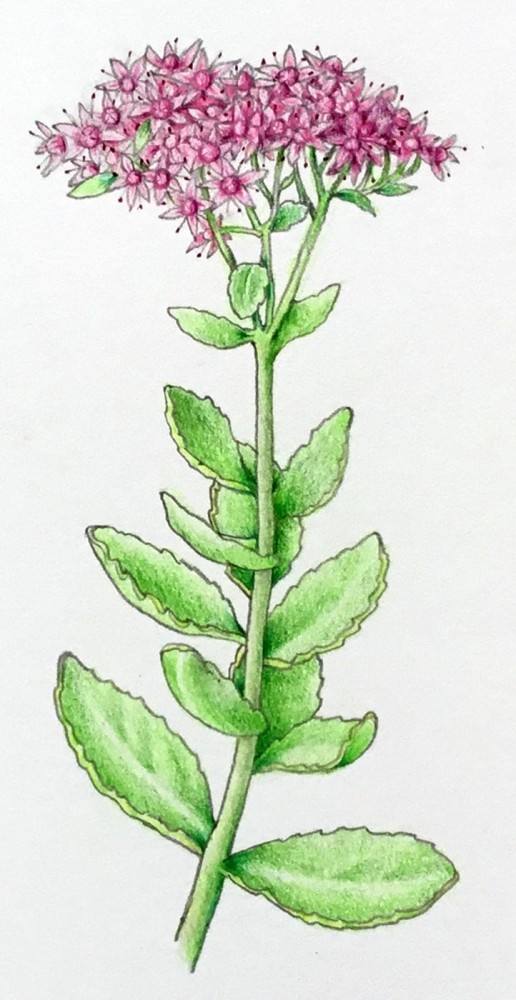My mother is a master gardener. In the spring, her beds are an explosion of showy blossoms, and in August, her gardens overflow with vegetables. Although we share a lifelong love of plants, our interests couldn’t be more different. My mother loves cultivated plants, while I, prodigal that I am, have always been more interested in the weeds. Every once in a while, though, there are plants where our interests overlap, and orpine (Hylotelephium telephium) is one of them. It is both a garden plant and a weed.
Orpine is just one of many common names for this plant. Others include harping Johnny, and witch’s moneybags. My mother knows this plant by the name sedum, which comes from an obsolete scientific name. Studies have since revealed that orpine and its relatives have a unique evolutionary lineage, distinct from the other plants in the genus Sedum, and botanists have assigned them a genus of their own. But gardeners and wild food enthusiasts alike still use some of its retired names including Sedum telephium and Sedum purpureum.
Originally from Europe and Asia, orpine is planted for its attractive flowers and pale green foliage. Gardeners such as my mother enjoy the texture it adds to a perennial bed and appreciate its compact growth, as well as the color it adds to the garden in late summer and fall. But sedum has a wild side. It likes to escape. And once escaped, it can grow and propagate long after all signs of a garden have passed away. Hence two of its other common names: live-forever and life everlasting. I have read that it can be found in fields, but I’ve seldom found it there. The primary place I’ve found orpine outside the garden is on sunny country roadsides.
Orpine’s most striking feature is its fleshy, succulent leaves. About an inch long, with widely spaced coarse teeth, these leaves alternate along a similarly fleshy stem that grows 1 to 2 feet high. Outside the garden, orpine doesn’t often flower, preferring instead to reproduce vegetatively. When it does flower, the five-petaled, star-shaped blossoms are small with a dusky rose-purple color. Several similar-looking species can be found in our area, including garden orpine (H. erythrostictum), with greenish white flowers, and wild stonecrop (Sedum ternatum), which has creeping stems and whorled leaves. Both of these are also edible and used similarly to H. telephium.
To harvest orpine, I cut off the top few inches of each stem. I don’t bother separating the leaves from the stem as they have a very similar texture, but I will always taste-test a few leaves in the field before I start collecting. Most patches of the plant have an excellent mild flavor, but not all do. Once, I got excited to introduce orpine to a friend and gave her a nice firm sprig to chew, only to watch her scrunch up her face because the flavor was so bitter. Some guides suggest only collecting orpine greens in the spring, but I’ve enjoyed them well into summer. They don’t seem to grow tough or bitter as many other greens do.
I have never cooked orpine greens. I usually chop them coarsely and add them for a hearty crunch to salads. There are so few succulents in the modern supermarket that even a little of this remarkable green adds something truly unique.
Orpine is not as widely written or talked about in foraging circles as many other wild greens. Nettles, ramps, fiddleheads, and lamb’s-quarters get a lot of attention, but orpine is a great plant to get to know as a beginning forager – easy to identify, easy to harvest, easy to prepare. Even those who prefer their vegetables come from the garden could find nothing to object to. About this plant, both gardeners and foragers can agree.


